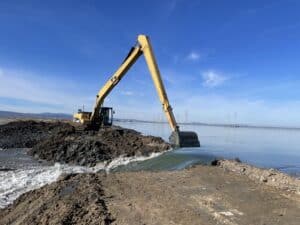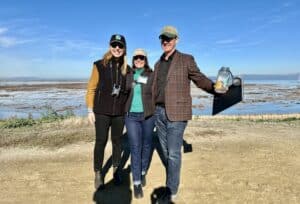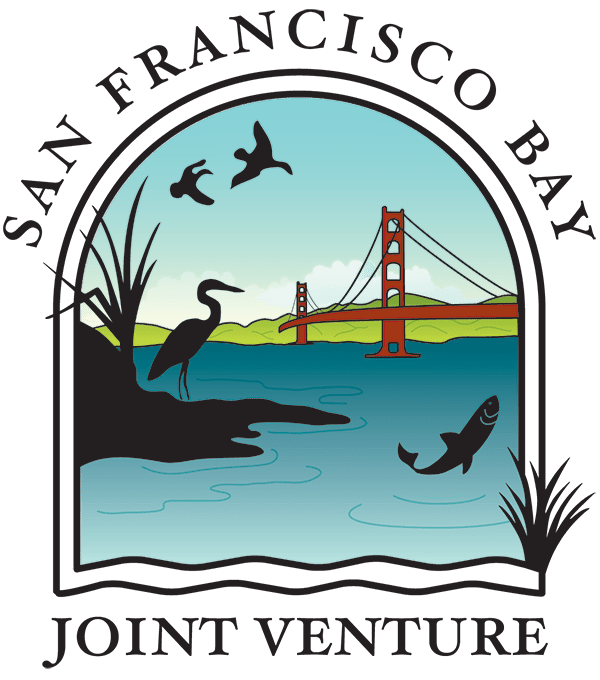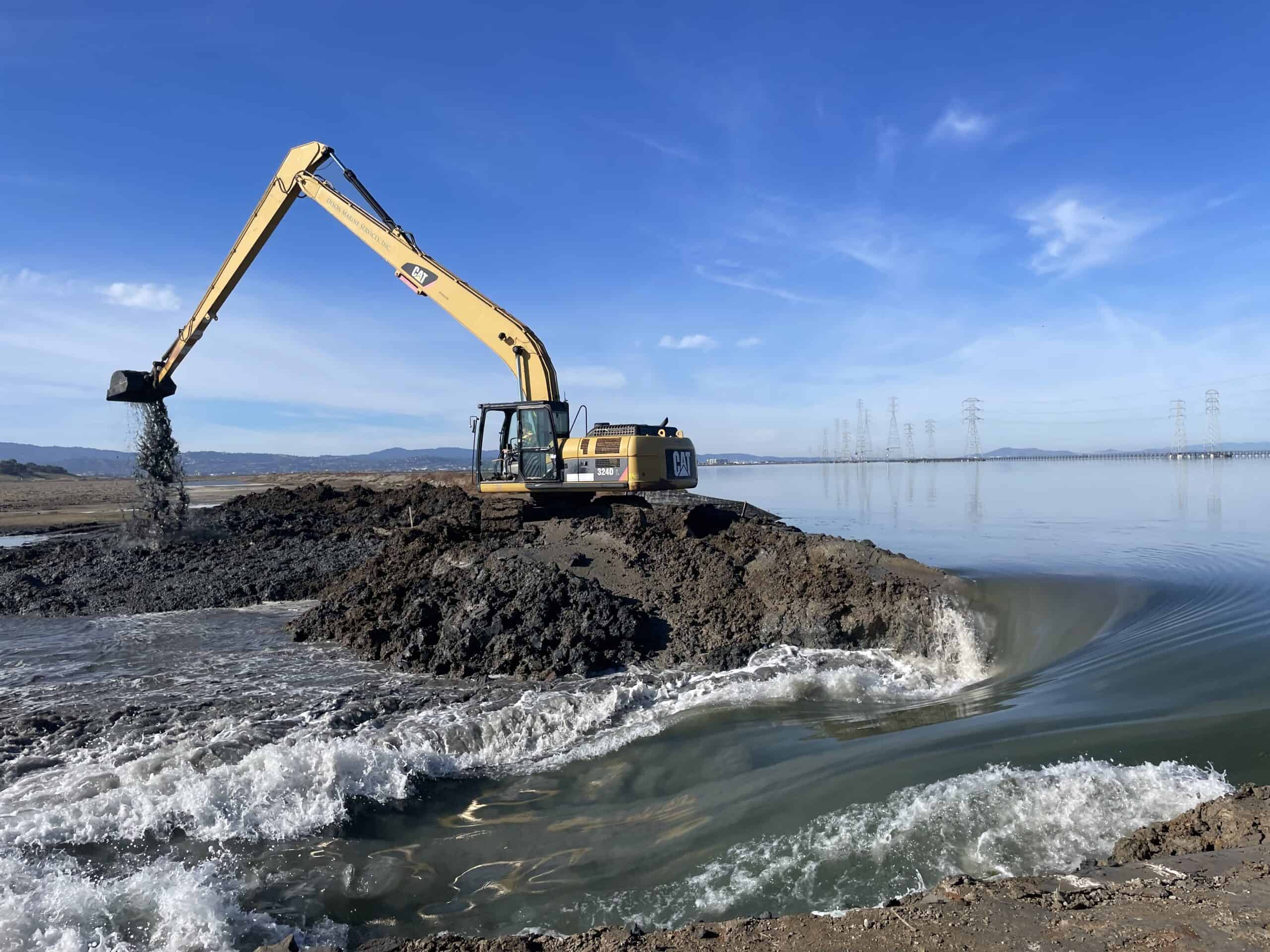Did you know that in one of the most urban centers in the United States lies one of the largest restoration projects? The South Bay Salt Pond Restoration Project is the largest tidal wetland restoration on the west coast. Located in the southern portion of the iconic San Francisco Bay, the project aims to restore 15,100 acres of former industrial salt ponds to marsh and other habitats. On December 13th, 2023, tidal flows were reintroduced to 300 more acres at the Ravenswood section of the Don Edwards SF Bay National Wildlife Refuge.
Over 160 onlookers gathered at Bedwell Bayfront Park in Menlo Park to witness history. Within ten minutes, over ten years of work came to fruition, as one of the old salt berms (also known as levees) was breached, opening a hole to allow for tidal flow. For the first time in decades, there was salt water rushing across the landscape, infusing the veins of the marsh with a new lifeforce.
For People and Wildlife
Since the Gold Rush, the San Francisco Estuary has lost up to 90% of its original wetlands, largely due to development (ports, airports, buildings, and salt-production ponds). Restoring tidal wetlands is critical to protect wildlife (including endangered species such as the California Ridgway’s Rail and the Salt Marsh Harvest Mouse) and build resilience to changing climates. Ongoing tidal flow deposits a thin layer of sediment on top of the landscape, slowly elevating the marsh and propagating new plant life. Dave Halsing, the Executive Project Manager at the South Bay Salt Ponds, noted that birds were observed in the Ravenswood pond just one day after the breach. Highly productive ecosystems, restored marshes create new habitat for wildlife to thrive and help protect communities from coastal flooding and sea level rise.
Restoring marshes is a nature-based solution to combat rising seas. Tidal marsh sequesters carbon dioxide (a greenhouse gas), absorbs pollutants, and improves the quality of the Bay. Marshes absorb energy and diffuse the force of high tides and wave action from storm surges. Increased water circulation can widen creek channels which allow for faster storm water drainage into the Bay – reducing flooding risk for low-lying Bay front communities. Lastly, people benefit directly from having a healthier ecosystem, which contributes to our clean air, water, and access to nature (studies have shown more interaction with nature improves our physical and mental well-being).
Looking forward
This breach represents a huge success for the South Bay Salt Pond Restoration Project team and partners and residents of the San Francisco Bay Area. In the spring of 2024, the project will construct a half mile trail connecting the Bay Trail to the Bedwell Bayfront Park trail network. Meta recently built a bridge that connects their Menlo Park campus to the park system. Getting more people out on the landscape to enjoy the benefits of nature is a critical aspect to restoring wetlands. This project is a reminder that when nature thrives, people thrive.
Keep up with news from the South Bay Salt Pond Restoration Project.
Media is courtesy of the South Bay Salt Ponds Restoration Project and SFBJV Staff.



